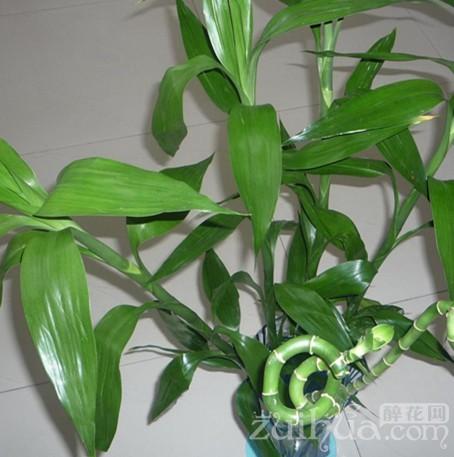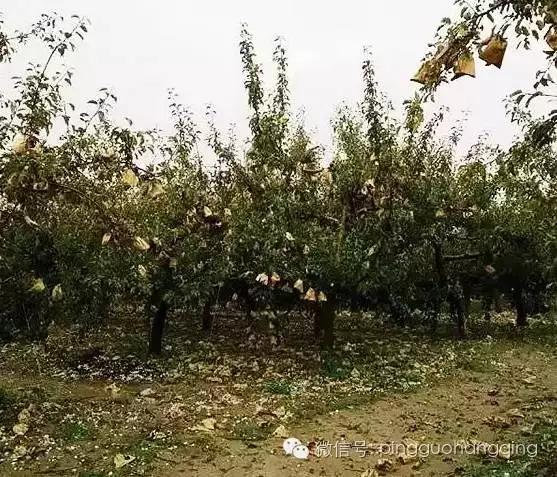Several reasons for the yellowing of rich bamboo leaves and the correct methods of cultivating it
The leaves of Fugui bamboo are light and thin, and each leaf is lush, giving people the feeling of spring. The most important thing is its leaves, once the leaves are not healthy, its ornamental value also decreases. If you want to raise it well, it is important to master the right method. Today I will take you to understand the reason why the leaves of Fugui bamboo turn yellow.

The leaves are yellowing
1. Improper watering
Improper watering will cause rich bamboo leaves to turn yellow. To judge whether the leaves of rich bamboo are yellowing or dry yellow can be determined by the different characteristics of yellowing leaves. The water-yellow leaves are reflected in the tender leaves, but the old leaves do not turn yellow, while the dry-yellow old leaves are withered and yellow, and the new leaves grow normally. After judging, the moisture can be increased or decreased according to the cause of yellowing.
two。 Insufficient or excessive light
Too much or not enough light can also lead to yellowing of rich bamboo leaves. The yellowing caused by excessive light is called burning yellow, which is characterized by the appearance of macula in the part of the leaves facing the sun; lack of light leads to the lack of light leading to the lack of chlorophyll synthesis and yellowing, and the yellowing and shedding of the whole leaves can be avoided by strengthening the light.
3. Improper fertilization
Improper application of fertilizer will also cause rich bamboo leaves to turn yellow. Too much fertilizer will make the new leaves thick and dull, and the old leaves will be scorched yellow. If this happens, the fertilizer should be cleaned and removed; insufficient fertilization will make the young leaves lighter and the old leaves gradually turn yellow, so thin fertilizer should be applied.
An exuberant method of farming
1. Basin soil selection
The best way to cultivate Phyllostachys pubescens is loose and fertile sandy loam, and it can be cultivated with rotten leaf soil, vegetable garden soil and sand according to 5 ∶ 4 ∶ 1. If a small amount of broken eggshell is infiltrated into it, the bamboo will grow more vigorously. Turn the basin and change the soil once every spring. when turning the basin and changing the soil, it is appropriate to put a layer of broken hard plastic foam at the bottom of the basin to facilitate air permeability, drainage, prevent rotting roots, and easy to take off the basin.
two。 Water and fertilizer management
Rich bamboo likes both moisture and fertilizer, but potted indoor ornamental plants should control water and fertilizer to make it grow slowly and improve the ornamental value. During the growing period, according to the change of seasonal climate, the basin soil should be watered once from 2 to 5 days to keep the basin soil moist, and water should be often sprayed to the leaf surface to increase the air humidity of the small environment and benefit its growth. Adhere to the frequent application of thin fertilizer, a small amount of nitrogen, phosphorus and potassium compound fertilizer once from 15 to 20 days, excessive or single application of nitrogen fertilizer is easy to grow. No fertilizing in winter, less watering.
3. Temperature and light
Phyllostachys pubescens likes to be warm, the most suitable growth temperature is 18 ℃ to 25 ℃, and it is not resistant to cold. When the lowest temperature drops to 5 ℃, it should be indoors to overwinter, and the room temperature should be kept above 5 ℃. It likes the environment where the scattered light is sufficient, and the scorching sun is avoided in summer and early autumn. It can be placed in a place where direct light can be seen or scattered light within 2 meters from the window from the end of autumn to the next spring. Overcast will make the leaf color lose luster.
These are the reasons for the yellowing of the leaves of rich bamboo, as well as the correct maintenance methods. I hope it can be helpful to the majority of flower friends. Please continue to pay attention to Zuihua net and learn more about flower conservation.
Original address: http://www.zuihua.com/article-33224-1.html
- Prev

Parts of Shanxi, Shaanxi, Gansu and Sichuan all suffered severe hail disasters yesterday.
Parts of Shanxi, Shaanxi, Gansu and Sichuan all suffered severe hail disasters yesterday.
- Next

The small one is the authentic Shenwan pineapple? Even many Zhongshan people have made a mistake.
The small one is the authentic Shenwan pineapple? Even many Zhongshan people have made a mistake.
Related
- A course of planting techniques and methods on how to grow carrots
- How to plant the latest tulips?
- Is it better to pick tea in the morning or in the afternoon? When is the best time for tea to be picked? what is the third or fifth tea?
- Launch Yuanxiao Happy combination Haocha + Tea Yuan healthy Taste
- Penghu Tourism "Fireworks 20 Parade with You"
- 2022 West Lake Happiness holds "Digital Revitalization Voucher" and draws iphone13 and laptop.
- Banqiao Fuzhou social houses are designed to change start-up combined with police elimination to create a safe and livable environment
- The convenient measure of "mechanical weeding" in Xinbei has been abused and the Agriculture Bureau has imposed heavy penalties on the illegal land consolidation.
- Changgeng University Joins Hands with Four Memory Factories to Rescue Memory Talent Shortage
- The list of Taiwan's top 100 MVP managers is listed by the Director-General of the Farmers' Association of Sanxia District.

